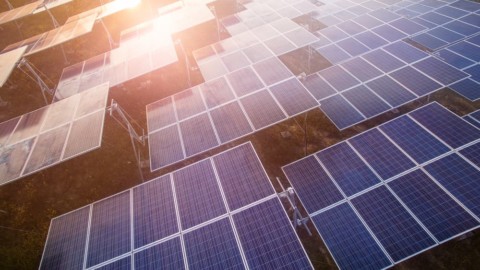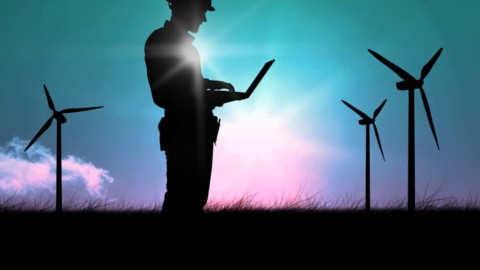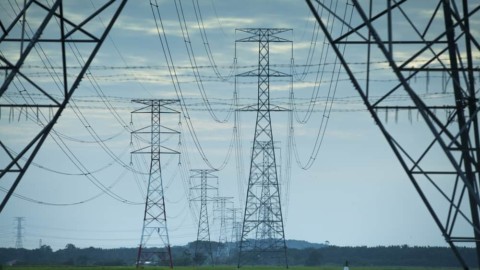The New South Wales Environment Protection Authority (EPA) has released its new draft Climate Change Policy and Action Plan, which involves working with industry, experts and the community to reduce greenhouse gas emissions and support climate resilience.
New South Wales EPA Chief Executive Officer, Tony Chappel, said the EPA has proposed a set of robust actions to achieve a 50 per cent reduction in carbon emissions by 2030 (from 2005 levels), ensure net zero emissions by 2050, and improve resilience to climate change impacts.
“New South Wales has ambitious targets that align with the world’s best scientific advice and the Paris commitments, to limit global warming to an average of 1.5 degrees in order to avoid severe impacts on ecosystems,” Mr Chappel said.
“Over the past few years we have seen first-hand just how destructive the impacts of climate change are becoming, not only for our environment, but for New South Wales communities too.
“We know the EPA has a critical role to play in achieving the New South Wales Government’s net-zero targets and responding to the increasing threat of climate change induced weather events.
“Equally, acting on climate presents major economic opportunities for New South Wales in new industries such as clean energy, hydrogen, green metals, circular manufacturing, natural capital and regenerative agriculture.”
Key actions outlined in the EPA’s plan include:
- Working with industry, government and experts to improve the evidence base on climate change
- Supporting licensees prepare, implement and report on climate change mitigation and adaptation plans
- Partnering with NSW Government agencies to address climate change during the planning and assessment process for activities the EPA regulates
- Establishing cost-effective emission reduction targets for key industry sectors
- Providing industry best-practice guidelines to support them to reduce their greenhouse gas emissions
- Phasing in the introduction of greenhouse gas emission limits on environment protection licences for key industry sectors
- Developing and implementing resilience programs, best-practice adaptation guidance and harnessing citizen science and education programs
- Working with EPA Aboriginal and Youth Advisory Committees to improve the EPA’s evolving climate change response
“This draft policy sends a clear signal to regulated industries that we will be working with them to support and drive cost-effective decarbonisation, while implementing adaptation initiatives that build resilience to climate change risks,” Mr Chappel said.
“Our draft plan proposes a staged approach that ensures the actions the EPA takes are deliberate, well informed and complement government and industry actions on climate change. These actions will support industry and allow reasonable time for businesses to plan for and meet any new targets or requirements.
“Climate change is an issue that we all face so it’s important that we take this journey together and all play our part in protecting our environment and communities for generations to come.”
New South Wales EPA Acting Chair, Carolyn Walsh, said the EPA is a partner in supporting and building on the State Government’s work to address climate change for the people of New South Wales.
“The draft Policy and Action Plan adopts, supports and builds on the strong foundations that have been set by the New South Wales Government through the New South Wales Climate Change Policy Framework, Net Zero Plan and Climate Change Adaptation Strategy,” Ms Walsh said.
Climate Council CEO, Amanda McKenzie, welcomed the New South Wales EPA’s leadership on turning government targets for cutting emissions into tangible actions.
“The New South Wales EPA has been clear that their new policy is designed to work hand-in-hand with stronger federal laws on pollution – like those that should be delivered through a reformed Safeguard Mechanism – and the inclusion of emissions in federal environmental assessments,” Ms McKenzie said.
“We need to see this kind of action federally too so that all levels of government are working in tandem to deliver the deep emissions cuts Australia must achieve this decade.”
However, the Climate Council noted that, “The draft EPA policy has a significant gap in its treatment of pollution from new fossil fuel projects.”
“Any regulatory process that still leaves the door open to new coal and gas projects won’t deliver on the EPA’s clear, court-ordered duty of preventing climate harms. The final policy needs to be clear that there is no room for new coal and gas if we are to keep global warming within safe limits.”
The EPA will work with stakeholders, including licensees, councils, other government agencies, and the community to implement the plan.
The draft EPA Climate Change Policy and Action Plan is available at https://yoursay.epa.nsw.gov.au/ and comments are open until 3 November 2022.
Feature image: Provided.















